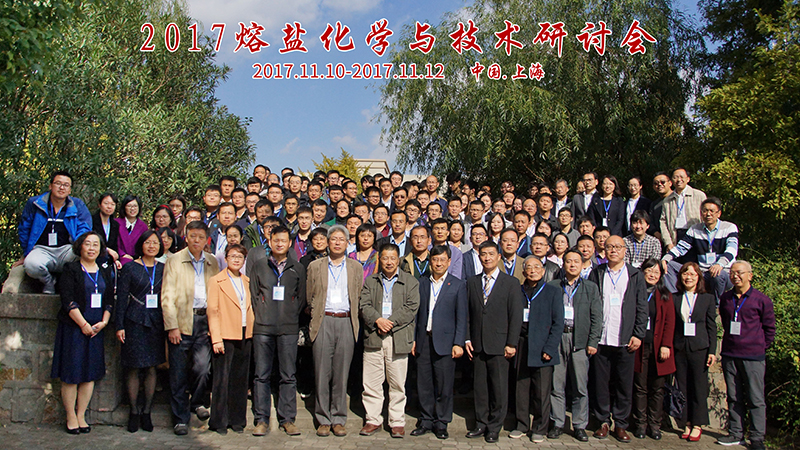Co-sponsored by the Shanghai University and the East China University of Science and Technology, the conference on molten salt chemistry and technology has been successfully held on November 10-12, 2017 in Shanghai. The seminar received 23 academic reports.
As a major forum for academic exchange and cooperation, the annual meeting provide a communication platform for researchers in this field.
Like all preceding symposiums, the experts and scholars introduced the latest research hotspots in the scientific and technical applications of molten salt, and put forward suggestions and opinions on the future research objectives during the meeting. The main topics discussed in the symposium could be concluded as follows: 1. the mechanism of process in molten salt; 2. the structure and properties of molten salt; 3. the application of molten salt in the field of new materials; 4. the application of molten salt in the field of environment; 5. the application in the field of nuclear energy; 6. the progress and application of ionic liquids.
It’s my honor to attend such a meaningful seminar and we appreciate that Prof. Xiao gave us a great opportunity to get more information about the research in the field and enlarge our vision. Meanwhile, I can not deny the fact that there are many stumbling blocks to acquire information effectively, which was caused by the relative lack of theoretical knowledge and the limit of view in the research area. More efforts and more experience are needed to enhance my scientific research ability.
Finally, I’d like to end with some of the tips noted during the conference and hope they can provide worthwhile reference.
Consider the entire reaction instead of the half-reaction.
Rigorous attitude in the laboratory is needed.
The reference electrode is vital to a successful experiment.
The treatment of water in the molten salt system is important because of the emergence of the superoxide, resulting in nanobubbles, which will affect the reaction in the molten salt.
In the electrochemical anodization, high current density per unit area can lead to the formation of non-uniform metal oxide film.
In the CV curves, at the point of the oxygen evolution potential, or the potential of alkali metal precipitation, the tangent line of the curve need to be labeled.

Author: Xinxin Liang